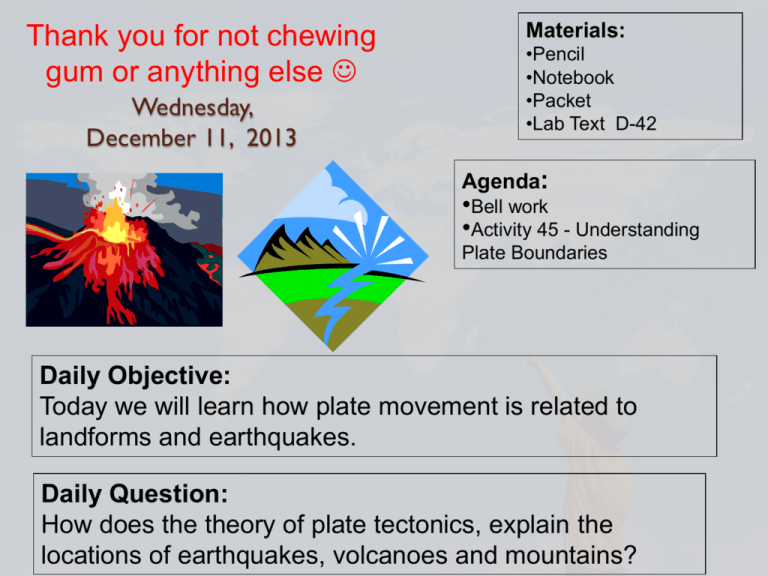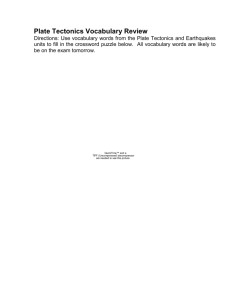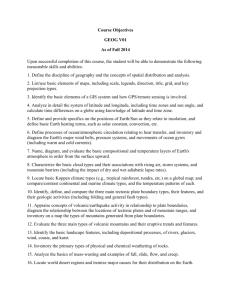Daily Objective
advertisement

Thank you for not chewing gum or anything else Wednesday, December 11, 2013 Materials: •Pencil •Notebook •Packet •Lab Text D-42 Agenda: •Bell work •Activity 45 - Understanding Plate Boundaries Daily Objective: Today we will learn how plate movement is related to landforms and earthquakes. Daily Question: How does the theory of plate tectonics, explain the locations of earthquakes, volcanoes and mountains? Activity 45: Understanding Plate Boundaries Procedure: -Read the activity - As you read complete the notes worksheet-Student Sheet 45.1 When you are done, work on your study guide. Convergent Plate Boundary Oceanic/continental asthenosphere - is a part of the upper mantle just below the lithosphere that is involved in plate tectonic movement Subduction - process that takes place at convergent boundaries by which one tectonic plate moves under another tectonic plate and sinks into the mantle as the plates converge Ex: Andes Mountains Cascade mountain Range Continental/Continental Convergent Plate Boundary Earthquakes Mountains Ex: Himalayan Mts. Oceanic/Oceanic Convergent plate boundary. Ex: Solomon Islands Divergent Volcanoes Ridges Ex: Mid-Atlantic Ridge Transform Earthquakes Ex: San Andreas Fault Hot Spots Hot Spot: volcanic regions thought to be fed by underlying mantle in which magma is trapped and hot compared with the mantle in other places. Ex: Hawaii & Yellowstone plate simulation http://sepuplhs.org/middle/iaes/students/simulations/sepup_plate_motio n.html Act 47 Spreading Plates Purpose/Problem Statement: Procedure: Follow steps 1-12 carefully and complete student sheet 47.1 Analysis questions 1-4 in notebook Act 48 Other types of plate motion Purpose/Problem Statement: Procedure: Follow steps 1-9 carefully and complete student sheet 48.1 Analysis questions 1-4 in notebook





